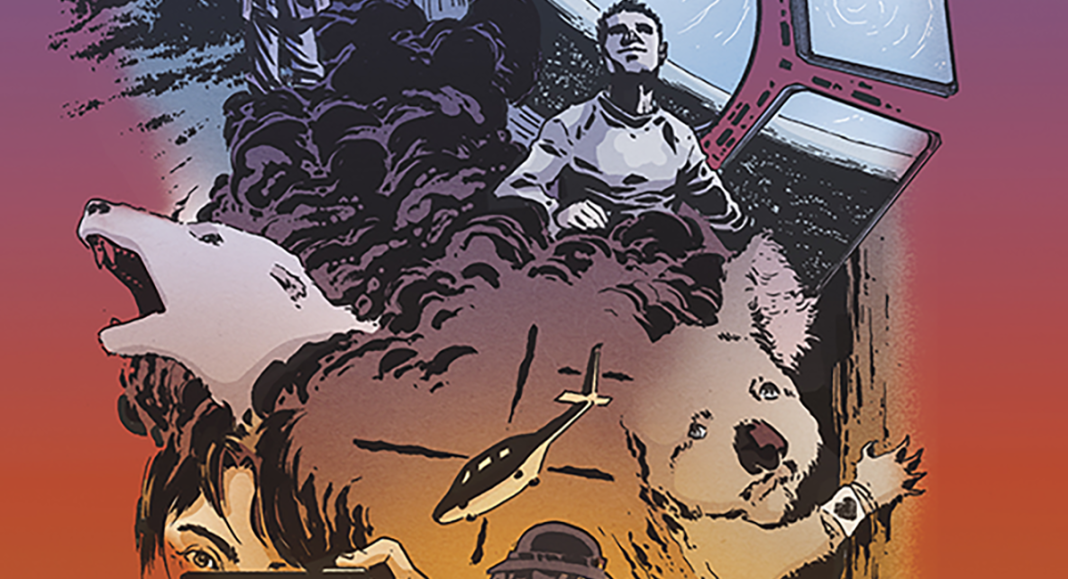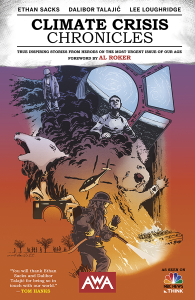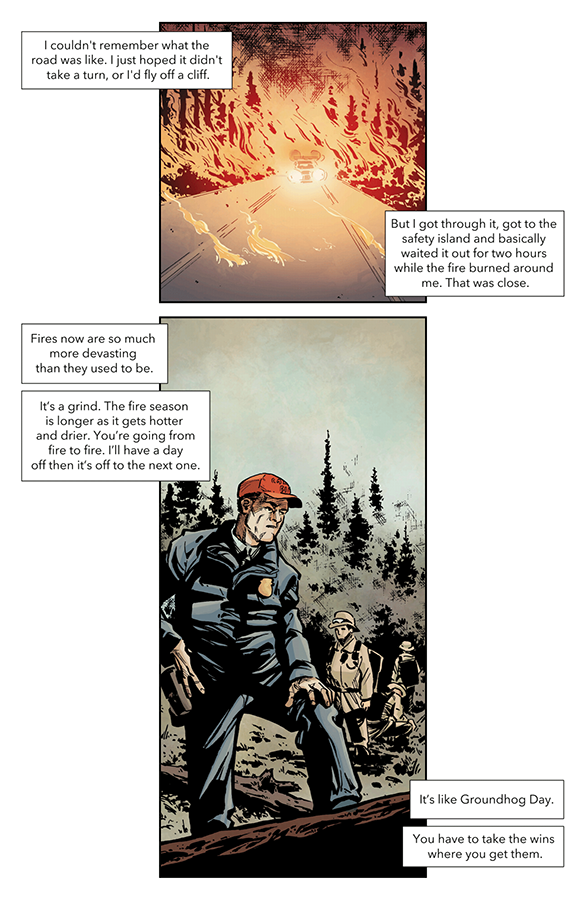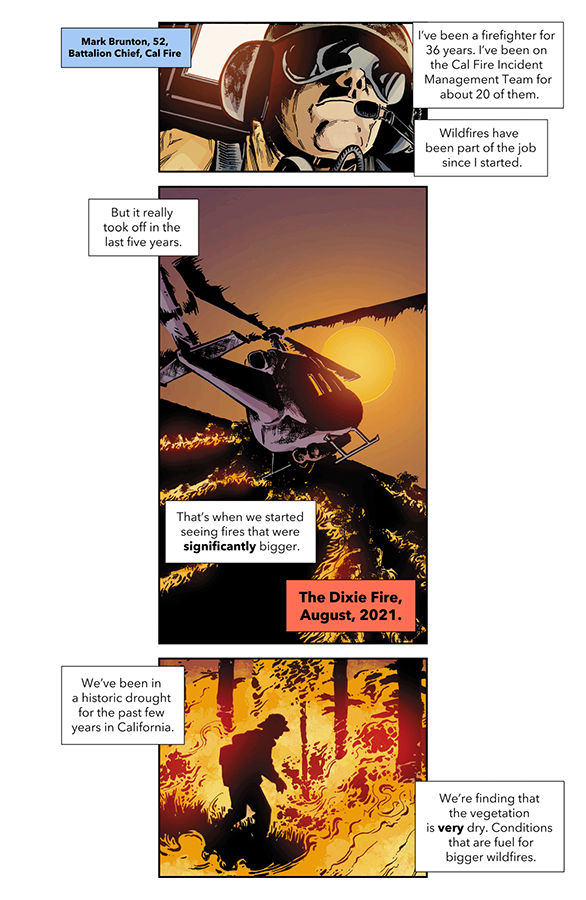Climate Crisis Chronicles
Writer: Ethan Sacks
Artist: Dalibor Talajić
Colorist: Lee Loughridge
Letterers: Bosung Kim & Dulce Montoya
Editor: Dulce Montoya
Publisher: AWA Studios
In my opinion, a barrier that can hold back an environmental book from a wider audience is fear of the book causing guilt. Climate Crisis Chronicles (released last November by AWA Studios) does emphasize the urgency of issues, but it isn’t unrelentingly dark. The evidence of so many courageous bright lights tackling climate challenges offers a lot of hope… and inspiration.
Comics are a powerful, accessible medium to tell true stories. The team behind Climate Crisis Chronicles seems well-aware of this fact, following up their Covid Chronicles release of 2020 with a similarly styled set of hard-hitting interviews. They feature diverse voices, from an Indian youth climate activist to a Honduran hurricane volunteer. The book concisely shares a satisfying global slice of a subject that could easily have become unwieldy.
I was gratified to see perspectives in this book which aren’t often represented, like a group interview with members of a European boat-rescue organization that helps migrants stranded at sea. There are wildlife-focused stories, humanitarian aid stories, worker stories, natural disaster stories, on land and sea, in the air, and even in space. All stories are recent—with some dated up to the end of 2021—which is important with such a dynamically changing topic.
The overall style of this book is somewhat essay-like. Each chapter is the voice of an interviewee, interviewed and written by Ethan Sacks. Accounts are overlaid on a series of visuals evocatively rendered by Dalibor Talajić and luminously colored by Lee Loughridge. Letters by Bosung Kim and Dulce Montoya thread through the panels in an intuitive flow. In some of the book’s most emotional moments, an interviewee describes play-by-play memories of an event and the art takes us into the scene. The creators don’t exclusively focus on these memories though, and we get additional context and expertise from interviewees’ high-level remarks. It’s a nice balance of head and heart.
The interviewees’ high-level perspectives often showcase data about climate changes and effects. A fire battalion chief—who fought both the California-based Thomas Fire and Dixie Fire—notes, “I’ve been a firefighter for 36 years […] Wildfires have been part of the job since I started. But it really took off within the last five years. That’s when we started seeing fires that were significantly bigger.” The president of a koala nonprofit shares, “Between 2017 and 2019 we had the two driest years, the longest dry period on record in this part of the country—which was most unusual because usually this is one of the wettest areas in New South Wales and in Australia. During that two year drought we found we were taking in far more koalas.”
When they go for the heart, the stories are moving by nature. A Malaysian photographer documents city and environmental destruction in China due to dams and coal plants. A European astronaut shares a “bird’s eye view” of the planet. The driven mayor of Freetown, Sierra Leone takes on issues like atrocities, Ebola, and deforestation. She remarks, “Our solutions are not the same solutions as the West. We don’t have the industry. When we talk about ’net zero’ (carbon emissions), we’re already at almost zero. Because, you know, we’re not emitting. But we are suffering.” Her observation hints at the growing inequalities of the climate crisis and the need for greater action by countries bearing greater responsibility.
In one chapter, an American youth activist describes how she witnessed the detrimental effects of climate policy in Laos. Small timber companies were not given enough time and resources to transition to new ways. Her story highlights the need for thoughtful and nuanced writing and implementation of climate laws, with attention to local stakeholders. Changing how an industry operates on a business and worker level is never simple.
Last month saw my state of California facing extreme flooding, with mudslides aggravated by recent wildfires. It’s hard not to see it as early days of events to come. I’ve been reading about climate change for a little under two decades now, so I’m already aware of the wide-ranging problems and the need for action. But I still learned a lot from this book. It could also be very useful as a resource for a class or school library.
If these critical issues interest you, check out Climate Crisis Chronicles. You won’t be disappointed by this brisk, insightful look at the selfless human opposition to climate change.
Verdict: Buy
Climate Crisis Chronicles is out now.
Read more trade collection reviews every Thursday in our Trade Rating column!









